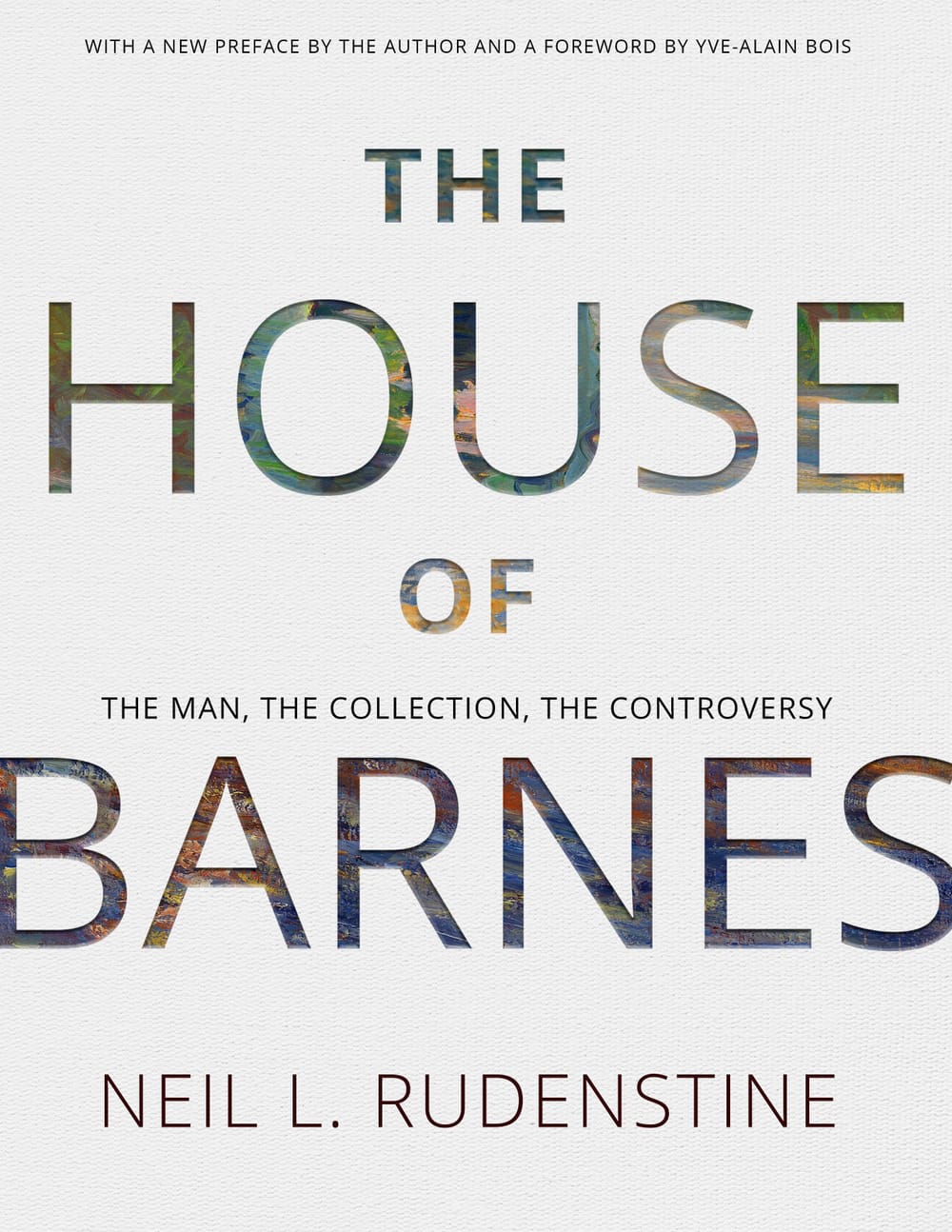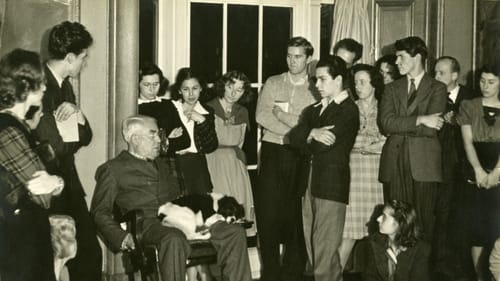Stay in the Loop
BSR publishes on a weekly schedule, with an email newsletter every Wednesday and Thursday morning. There’s no paywall, and subscribing is always free.
Still braving Barnes bias
The House of Barnes: The Man, the Collection, the Controversy, by Neil L. Rudenstine

There is no shortage of strong opinions about the collection of Dr. Albert C. Barnes and its move from Merion to Center City, including the 2009 documentary The Art of the Steal. Now, Philly’s American Philosophical Society Press has re-issued Neil L. Rudenstine’s book The House of Barnes: The Man, the Collection, the Controversy. I approached the new volume with respect for the author’s scholarship as well as a jaundiced eye toward his history with the foundation.
Originally published in 2012, the book has been updated to include more photographs and a new foreword by renowned art historian Yve-Alain Bois. Organized in sections such as "Collectors and Collecting," "The Foundation," "Doomed by Indenture," and "The Court and the Case," the book allows readers to browse according to their interests.
Noting Barnes bias
Speaking of interests, many of us are biased about the Barnes collection and its big move. If we haven’t yet talked this topic to death, let’s start with bias. Rudenstine appears to have the inside track on the foundation’s decisions and financial information. That’s because he served on the board of trustees at the Barnes Foundation and is currently a trustee emeritus. No stranger to established, monied academia, Rudenstine was president of Harvard from 1991 to 2001, and he has chaired the boards of the New York Public Library and the Rockefeller Archive Center and was a vice-chair at the J. Paul Getty Trust.
As for my bias, I loved the Merion location. I was taken there as a child, and in adulthood, I would walk about a mile from the Merion train station to 300 N Latch’s Lane. Fired up by director Don Argott’s The Art of the Steal, I was filled with righteous indignation against the plan to move the collection.
A persuasive argument
Before discussing the various legal proceedings that led to the Barnes Foundation’s move to the Parkway, Rudenstine goes into authoritative detail about aesthetic theories, Barnes’s educational approach, and specifics about how he built his collection. The author then argues persuasively for the artworks’ move from Merion to Center City and breaks down the legal proceedings and the board’s decisions. The narrative is academic, heavily footnoted, and relying on primary sources, but sprightly enough that it’s fun to read. Rudenstine’s assessments of the foundation’s finances, as well as the tenures of directors and board chairs, are solid additions to the (biased one way or another) body of public knowledge about the controversial Barnes legacy. It joins 2023’s The Barnes Then and Now: Dialogues on Education, Installation, and Social Justice in offsetting The Art of the Steal and books like 2013’s Art Held Hostage: The Battle over the Barnes Collection.

As the story of the collection unfolds in Rudenstine’s telling, Barnes’s pugilistic personality comes under fire, sometimes taken too far in a book that is not a biography. Raised in Fishtown, Barnes (1872–1951) excelled in school and partly supplemented his scholarship at the University of Pennsylvania with money earned as a boxer. Apparently, he never stopped swinging, falling out with almost everyone he met throughout his life. Famously anti-establishment, Barnes held a particular loathing for Walter H. Annenberg (see Robert Zaller’s 2006 BSR piece, “Barnescam: or, how to steal $20 billion”).
Wanting it both ways?
Barnes’s feud with Annenberg was one of his longest and fiercest, so it’s bitterly ignominious that the Annenbergs were one of the top three funders of the move. Among all the conspiracy theories and scandals swirling around this fabulous art collection, unique in the world, we’ll never know the whole truth, or what could have been. However, it’s safe to say that Barnes would be apoplectic to see the Annenberg Court sign in the new building’s lobby.
Did the book change my thinking? A little bit. What changed my thinking, even more, is the job well done on the new building’s interior (despite that Annenberg Court sign) and the collection’s improved care, security, and accessibility since it opened on the Parkway in 2012. It seems I want it both ways: I visit more often while deploring the business of moving the artworks. The House of Barnes: The Man, the Collection, the Controversy is well worth reading, while keeping an eye out for the writer’s bias—and our own.
What, When, Where
The House of Barnes: The Man, the Collection, the Controversy. By Neil L. Rudenstine. Philadelphia: American Philosophical Society Press, November 2024. 264 pages, available in paperback, hardcover, and ebook; $45-$60. Get it here.
Sign up for our newsletter
All of the week's new articles, all in one place. Sign up for the free weekly BSR newsletters, and don't miss a conversation.
 Emily Schilling
Emily Schilling